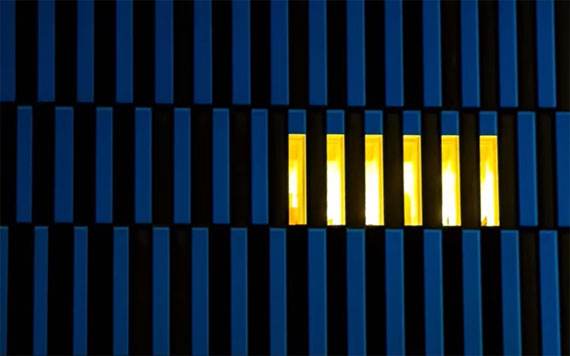In a recent, enlightening video, photographer Clifford Pickett from Urban iPhone Photography delves into the intricacies of architectural photography. Exploring the immense significance of patterns and their interruption, he opens up a new perspective for photographers aiming to capture the majestic beauty of architecture:
In the realm of architectural photography, patterns play a vital role. The repetition found in lines and structural formations naturally present in buildings forms the basis of architectural aesthetics. Pickett emphasizes that with the right composition and positioning, these repetitive elements can be leveraged to create compelling photos. The key lies in understanding the interplay between these patterns and framing them effectively.
Simplifying with Black and White
To further spotlight the geometric lines and shapes formed by the architecture, Pickett suggests switching to black and white mode. Stripping away the color reduces distraction, allowing both the photographer and the viewer to concentrate on the fundamental geometry. This technique is further enhanced by underexposing the image, which Pickett finds can help accentuate the intermingling of patterns, light, and the architectural lines.
Accentuating with Zoom
As Pickett demonstrates, a simple zoom can work wonders in removing the context of an image, allowing the focus to remain solely on the lines and patterns. This technique can be especially beneficial when capturing upward shots of buildings. In such instances, there is a natural distortion that can be followed, creating intriguingly warped perspectives that highlight the architectural design’s unique characteristics.
The Charm of Pattern Interruption
Perhaps the most captivating insight from Pickett’s video is the concept of “pattern interruption”. As mesmerizing as a pattern can be, the break in the repetition often becomes the center of attention. An open window amidst a wall of closed ones, or a lit lamp in a sea of darkened windows, can become the perfect focal point. These interruptions not only add intrigue but can also effectively draw the viewer’s attention.
Pickett’s expert tip is to align these interruptions strategically according to the rule of thirds. By positioning these breaks off-center, photographers can include more of the pattern in the shot, creating a more dynamic composition. Zooming in can simplify the frame, further emphasizing the break in the pattern.
Conclusion
The captivating power of architectural photography lies in the patterns it presents, and the unexpected interruptions of these patterns. Both are critical in capturing unique and eye-catching shots of architecture. As Pickett encourages us, the potential lies in the details, the small elements that differentiate one pattern from the next. Keep an open mind and a keen eye. The opportunities are indeed all around us.
It’s these little details that breathe life into a photo, making it more than just an image. It’s what gives the photo a story, a personality, and an emotion. Architectural photography is not just about buildings; it’s about capturing the soul of the structure, one pattern and interruption at a time.
As photographers, the challenge is to see the world differently, to see the patterns and their breaks, and to capture them in a way that tells a compelling story. With Pickett’s tips, we are one step closer to achieving this goal.
Launch sale ending soon: The Urban iPhone Photography Course at 80% Off
Like This Article?
Don't Miss The Next One!
Join over 100,000 photographers of all experience levels who receive our free photography tips and articles to stay current:







Leave a Reply